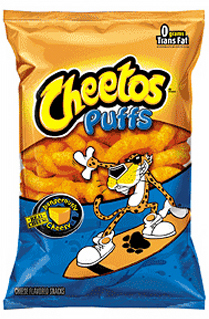In This Issue....
From the Editor: ExpeditionsMy First Winter Trip in Antarctica
Canadian Animal Assistance Team in Pond Inlet
Sledge Dog Memorial Fund Update
In the News
Book Review: Dog Days on Ice
Behavior Notebook: Transitions
Product Review: The Tick Key
Tip: Flammable Food
IMHO: The Next Great Thing
Navigating This
Site
Index of articles by subject
Index
of back issues by volume number
Search The
Fan Hitch
Articles
to download and print
Ordering
Ken MacRury's Thesis
Our
comprehensive list of resources
Talk
to The
Fan Hitch
The Fan
Hitch home page
ISDI
home page
Editor's/Publisher's Statement
Editor: Sue Hamilton
Webmaster: Mark Hamilton
The Fan Hitch, Journal of
the Inuit Sled Dog, is published four times
a year. It is available at no cost online
at: https://thefanhitch.org.
The Fan Hitch welcomes your letters, stories, comments and suggestions. The editorial staff reserves the right to edit submissions used for publication.
Contents of The Fan Hitch are protected by international copyright laws. No photo, drawing or text may be reproduced in any form without written consent. Webmasters please note: written consent is necessary before linking this site to yours! Please forward requests to Sue Hamilton, 55 Town Line Rd., Harwinton, Connecticut 06791, USA or mail@thefanhitch.org.
This site is dedicated to the Inuit Dog as well as related Inuit culture and traditions. It is also home to The Fan Hitch, Journal of the Inuit Sled Dog.
The Fan Hitch welcomes your letters, stories, comments and suggestions. The editorial staff reserves the right to edit submissions used for publication.
Contents of The Fan Hitch are protected by international copyright laws. No photo, drawing or text may be reproduced in any form without written consent. Webmasters please note: written consent is necessary before linking this site to yours! Please forward requests to Sue Hamilton, 55 Town Line Rd., Harwinton, Connecticut 06791, USA or mail@thefanhitch.org.
This site is dedicated to the Inuit Dog as well as related Inuit culture and traditions. It is also home to The Fan Hitch, Journal of the Inuit Sled Dog.

Flammable Food
by Mark Hamilton
There are lots of ways to make a fire when you're on the trail, from dry moss to steel wool or feather sticks, to name just three. Each has its advantages as well as its proponents. Today I'm pleased to provide you with a legitimate reason to take a (big?) bag of puffed Cheetos along with you on the trail. While you could eat them, they make excellent fire starters. Do you believe me? No? How about if I have a picture to show you?
Our tests burns were each performed using just ten Cheetos, having an average mass of 1 oz (30 g). Once burning, these "fire starters" were not affected by light breezes, and they burned with a steady flame for approximately three minutes.
What we did was build a chimney-shaped stack of Cheetos that was easily ignited with a wooden match. We judged its three-minute burn time to be sufficient to get a pile of kindling burning. If the kindling is damp, additional Cheetos (as long as no one has eaten the rest of the bag in the mean time) during the burn will lengthen the overall burn time.
In the following picture you can see an oily residue accumulating in the bottom of the pan. If you place a little dry kindling underneath the Cheetos as well as over them, that oil will soak into the kindling and further aid in building a fire. I also have to say that I find this picture just a bit upsetting, the Cheetos have burned, but they're still there. I don't know what to think about that.
By now you may be asking yourself, "So how hot a fire do you get with ten Cheetos?" I'm glad you asked. We put 8 oz (237 ml) of 75ºF (24ºC) water in a small pan. Next we put the pan on two flat-topped rocks with ten Cheetos underneath the pan. Three minutes later the water was 149ºF (65ºC), a 74ºF (23ºC) temperature rise.
There are other snack foods that are also flammable. You may want to experiment with your own favorite snack food to insure "dual-use" status on the trail. In general, fried snacks such as potato chips, corn chips and taco chips all burn, but energy density varies with each product. Energy density will effect burn times. We found Fritos not as suitable for use as fire starters, but were unable to determine why. They did not burn vigorously and their fire was susceptible to blowing out in light breezes.
Got a tip you'd like to share? Email it to mail@thefanhitch.org or snail-mail it to Mark Hamilton, 55 Town Line Road, Harwinton, CT 06791, USA.